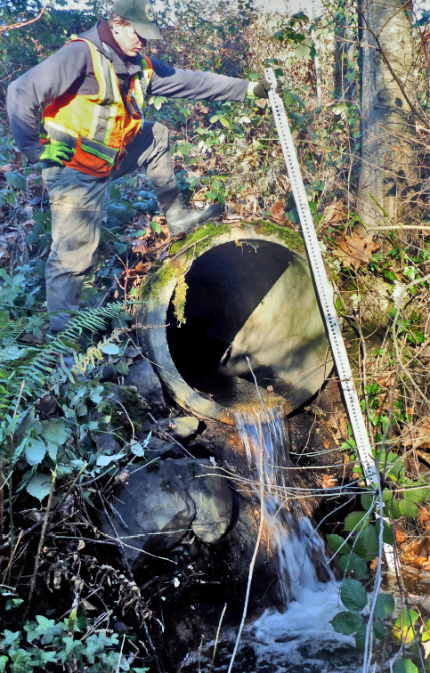ARCHIVED NEWS RELEASE
This document is provided for archival purposes only. Archived documents
do not reflect current WDFW regulations or policy and may contain factual
inaccuracies.
News release May 20, 2019
Dan Barrett, 360-902-2405
Rachel Blomker, 360-902-2236

OLYMPIA – Updated guidance is now available to identify and assess fish passage barriers in Washington streams. Fish passage barriers block salmon and steelhead from swimming upstream to their traditional spawning areas. When fish cannot swim upstream, they die before spawning and local populations decrease. Deteriorating culverts, fish ladders, and other barriers block fish passage and undermine salmon recovery efforts.
Cities, counties, conservation districts, regional fishery enhancement groups, and federal and state agencies use procedures from the Washington Department of Fish and Wildlife (WDFW) to identify fish passage barriers, document barrier locations, and prioritize barriers for correction. These procedures are the statewide standard and a requirement to receive grant funding for salmon restoration projects in Washington.
“Our updated guidance manual uses newer technologies and is more accessible to non-engineers,” said Dan Barrett, fish passage training manager. “We’ve simplified the user experience which should result in more accurate data from more people, allowing for better prioritization of projects for salmon restoration.”
WDFW offers free training on this updated guidance, which is typically attended by local and state government employees involved in assessing and prioritizing fish passage barriers, as well as those applying for grant funding.
“We’ve also made it easier for the public to get involved,” said Barrett. “We encourage people to use our new Washington State Fish Passage web application, which is a convenient archive of fish passage data from across the state”.
For more information on upcoming trainings and to download the updated Fish Passage Inventory, Assessment, and Prioritization Manual visit our fish passage webpage.
The Washington Department of Fish and Wildlife is the state agency tasked with preserving, protecting and perpetuating fish, wildlife and ecosystems, while providing sustainable fishing and hunting opportunities.